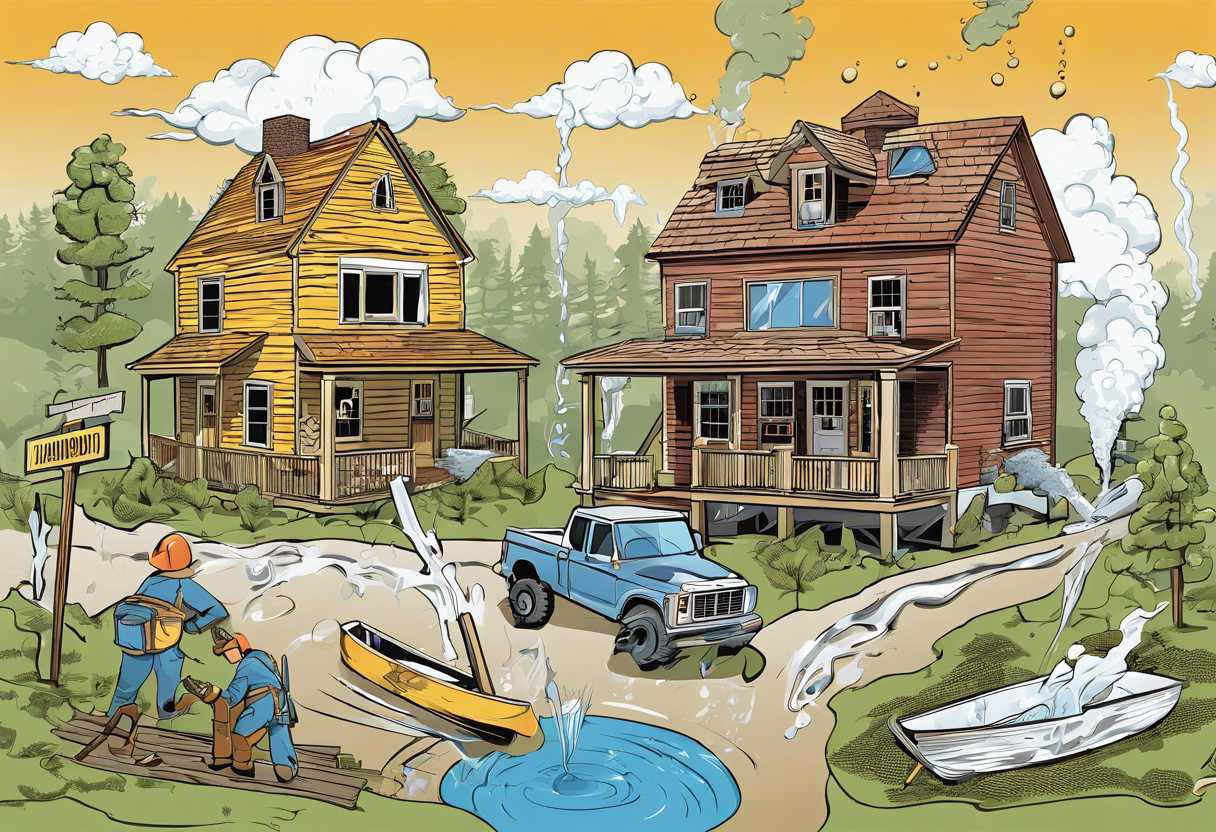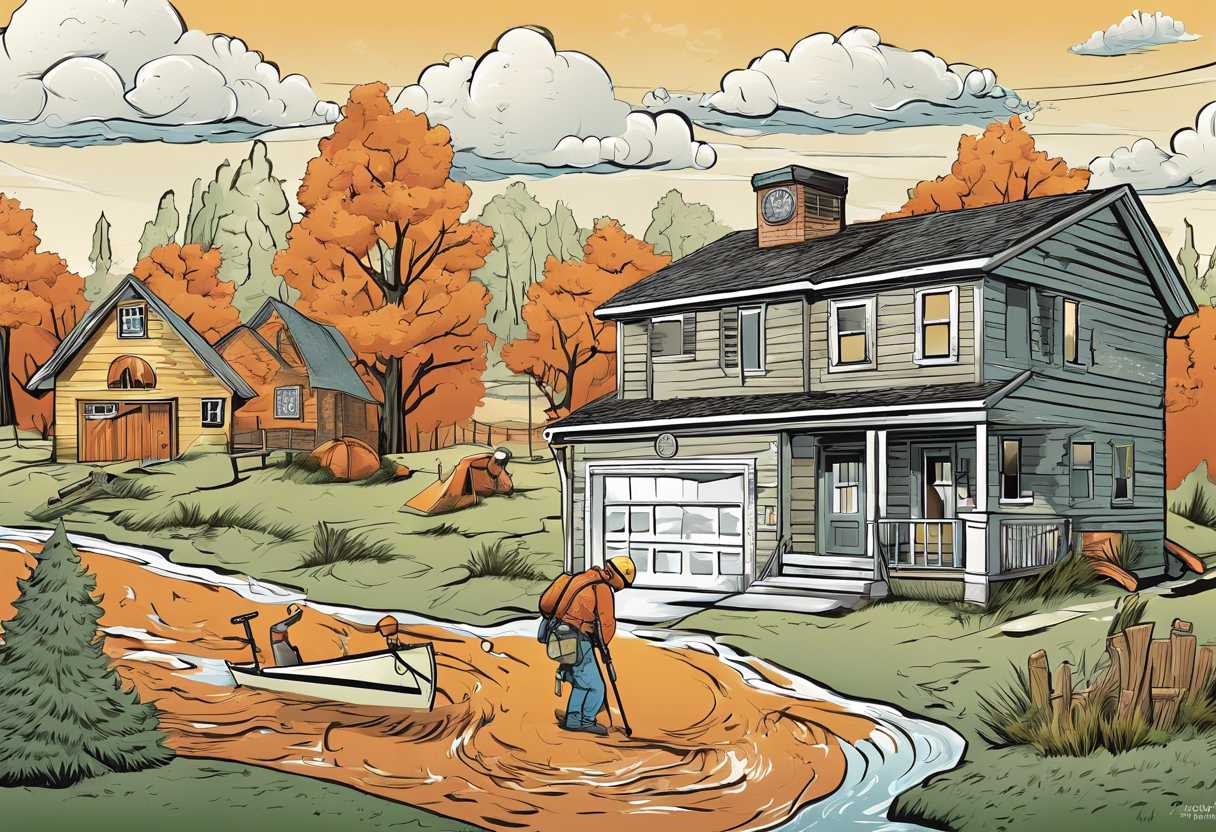Hazard Mitigation Planning is a critical aspect of building resilient communities in the face of natural disasters and other hazards. By understanding the importance of hazard mitigation planning, communities can effectively prepare for and reduce the impact of potential risks. This blog post will explore the key components of effective hazard mitigation planning, the role it plays in disaster risk reduction, and how it can be integrated into sustainable development strategies. Additionally, we will discuss best practices for implementing hazard mitigation planning in local communities, providing valuable insights for those looking to enhance their resilience. Stay tuned for a comprehensive overview of hazard mitigation planning and its significance in creating safer and more sustainable communities.
Understanding the Importance of Hazard Mitigation Planning for Resilient Communities
The Role of Hazard Mitigation Planning
Hazard mitigation planning is a crucial aspect of building resilient communities. It involves identifying potential hazards, assessing their risks, and developing strategies to minimize their impact. By proactively planning for potential hazards such as natural disasters, communities can reduce the loss of life, property damage, and economic disruption.
Benefits of Hazard Mitigation Planning
Implementing hazard mitigation plans can lead to numerous benefits for communities. These plans can help reduce insurance premiums, attract new businesses, and improve overall community safety. Additionally, they can enhance a community’s ability to recover quickly from disasters, minimizing the long-term impact on residents and infrastructure.
Key Components of Effective Hazard Mitigation Planning
Effective hazard mitigation planning involves several key components. These include conducting a comprehensive risk assessment, engaging with stakeholders, and developing clear and actionable mitigation strategies. It’s essential for communities to prioritize the most significant risks and allocate resources accordingly to ensure the success of their mitigation efforts.

Key Components of Effective Hazard Mitigation Planning
Comprehensive Risk Assessment
One of the key components of effective hazard mitigation planning is conducting a comprehensive risk assessment. This involves identifying and analyzing potential hazards, such as natural disasters, industrial accidents, or public health emergencies, that could impact a community. By understanding the specific risks faced by a community, planners can develop targeted mitigation strategies to reduce the potential impact of these hazards.
Community Engagement and Collaboration
Another essential component of effective hazard mitigation planning is community engagement and collaboration. Engaging with local stakeholders, including residents, businesses, and government agencies, is crucial for understanding the unique needs and priorities of a community. Collaboration with these stakeholders can help ensure that mitigation strategies are practical, feasible, and supported by the community.
Multi-Hazard Mitigation Planning
Effective hazard mitigation planning should also take a multi-hazard approach, considering the potential impact of various hazards on a community. This approach allows planners to develop integrated strategies that address multiple hazards simultaneously, maximizing resources and reducing duplication of efforts. By considering a range of potential hazards, communities can develop more resilient and adaptable mitigation plans.

The Role of Hazard Mitigation Planning in Disaster Risk Reduction
Understanding Hazard Mitigation Planning
Hazard mitigation planning involves identifying, assessing, and prioritizing risks and vulnerabilities to reduce the impact of disasters. It aims to minimize the loss of life and property by implementing measures to lessen the effects of natural and human-made hazards. This proactive approach focuses on long-term solutions to reduce the risk of disasters.
Importance of Hazard Mitigation Planning
Hazard mitigation planning plays a crucial role in disaster risk reduction by providing a framework for decision-making and resource allocation. It helps communities and organizations to identify and address potential hazards, develop strategies to minimize their impact, and enhance resilience. By integrating hazard mitigation into planning and development processes, it can lead to sustainable and cost-effective solutions for reducing disaster risks.
Benefits of Hazard Mitigation Planning
- Reduces the vulnerability of communities and infrastructure to disasters
- Minimizes the economic and social impacts of disasters
- Enhances community resilience and sustainability
- Improves public safety and emergency response capabilities
| Benefits | Impact |
| Reduces vulnerability | Minimizes the impact of disasters |
| Enhances resilience | Improves community sustainability |
Integrating Hazard Mitigation Planning into Sustainable Development Strategies
The Importance of Hazard Mitigation Planning
Hazard mitigation planning is a crucial aspect of sustainable development strategies. By identifying and addressing potential hazards such as natural disasters, infrastructure failures, and climate change impacts, communities can minimize the negative effects on their environment, economy, and population. Integrating hazard mitigation planning into sustainable development strategies ensures that future growth and development are resilient and sustainable.
Key Components of Integrated Planning
Integrated planning involves the coordination of hazard mitigation efforts with broader sustainable development goals. This includes incorporating hazard assessments, risk reduction measures, and emergency preparedness into land use planning, infrastructure design, and community development initiatives. By considering potential hazards in all aspects of development, communities can proactively minimize risks and enhance their overall resilience.
Benefits of Integration
Integrating hazard mitigation planning into sustainable development strategies offers numerous benefits. It can lead to more efficient use of resources, reduced long-term costs, and improved community safety and well-being. By prioritizing hazard mitigation within sustainable development, communities can create more resilient, adaptable, and sustainable environments for current and future generations.
Best Practices for Implementing Hazard Mitigation Planning in Local Communities
Understanding the Importance of Hazard Mitigation Planning
Hazard mitigation planning is a crucial aspect of ensuring the safety and resilience of local communities in the face of natural disasters and other hazards. By identifying potential risks and developing strategies to minimize their impact, communities can significantly reduce the potential for loss of life, property damage, and economic disruption.
**Effective hazard mitigation planning requires a comprehensive understanding of the specific risks and vulnerabilities faced by a community, as well as a proactive approach to addressing these challenges.**
Engaging Stakeholders and Building Partnerships
**One of the key best practices for implementing hazard mitigation planning is to engage a wide range of stakeholders and build strong partnerships within the community.** By involving local government agencies, community organizations, businesses, and residents in the planning process, it is possible to gain valuable insights and perspectives that can inform the development of effective mitigation strategies.
**Building partnerships with neighboring communities, regional organizations, and state and federal agencies can also provide access to additional resources, expertise, and funding opportunities to support hazard mitigation efforts.**
Developing and Implementing Comprehensive Mitigation Strategies
**A critical best practice for implementing hazard mitigation planning is the development and implementation of comprehensive mitigation strategies that address a wide range of potential hazards.** This may include measures such as land use planning, building code enforcement, infrastructure improvements, public education and outreach, and the establishment of early warning systems.
**By taking a holistic approach to hazard mitigation, communities can enhance their overall resilience and reduce the potential for significant losses in the event of a disaster.**
Conclusion
As we have explored in this blog post, hazard mitigation planning plays a crucial role in building resilient communities and reducing the impact of disasters. By understanding the importance of hazard mitigation planning, identifying key components, and integrating it into sustainable development strategies, local communities can effectively minimize risks and enhance their overall preparedness.
It is evident that hazard mitigation planning is not only a proactive approach to disaster risk reduction but also a fundamental element in promoting sustainable development. By implementing best practices and engaging in collaborative efforts, local communities can create a safer and more resilient environment for their residents.
As we move forward, it is essential for all stakeholders to recognize the significance of hazard mitigation planning and actively participate in its implementation. By working together, we can build stronger, more resilient communities that are better equipped to withstand and recover from potential hazards and disasters.
Let us continue to prioritize hazard mitigation planning as a critical component of our community development efforts, and strive to create a safer and more sustainable future for all.

